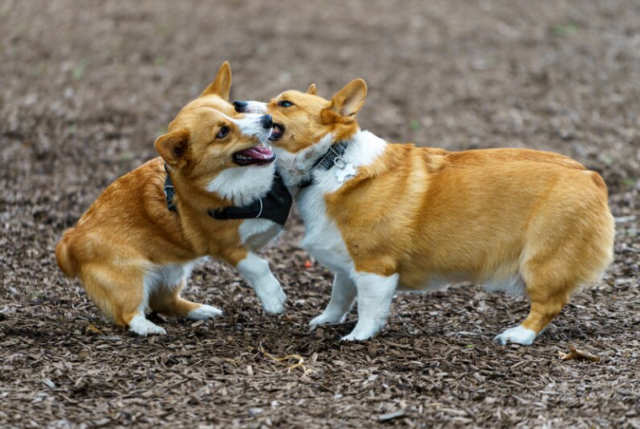How to Get Your Dog to Stop Barking at Other Dogs
Introduction
Having a dog that barks incessantly at other dogs can be frustrating and challenging to manage. Whether you’re taking your furry friend for a walk or simply trying to enjoy some peace and quiet at home, constant barking can disrupt your daily routines and cause unnecessary stress. In this comprehensive guide, we will explore effective techniques and strategies to help you address this issue and teach your dog to stop barking at other dogs.
Understanding the Behavior
Before delving into the solutions, it’s important to understand why dogs bark at other dogs in the first place. Dogs communicate through barking, and it can signify various emotions and intentions. Barking at other dogs could stem from fear, territorial instincts, anxiety, or even excitement. By recognizing the underlying triggers, we can better tailor our training methods to modify the behavior.
1. Socialization is Key
One of the most effective ways to reduce your dog’s barking at other dogs is through proper socialization. Introducing your dog to various canine companions in controlled environments will help them develop confidence and familiarity. Start with calm and friendly dogs, gradually exposing your pet to different sizes and breeds. Positive experiences during socialization can significantly reduce barking tendencies.
2. Desensitization and Counter-Conditioning
Desensitization and counter-conditioning techniques can help your dog associate the presence of other dogs with positive experiences, gradually reducing their barking. Start by exposing your dog to a recorded dog barking sounds at a low volume and rewarding them with treats and praise for calm behavior. Gradually increase the volume over time while continuing to reward their calmness.
3. Use Distractions
When walking your dog and encountering other dogs, having distractions on hand can redirect their attention and minimize barking. Carry treats or toys that your dog finds engaging, providing them with something positive to focus on instead of barking. This technique helps shift their focus away from potential triggers and reinforces positive behavior.
4. Obedience Training
Teaching your dog basic obedience commands is crucial for managing their behavior around other dogs. Commands such as “sit,” “stay,” and “leave it” can be powerful tools in redirecting their attention and maintaining control. Consistent training and reinforcement will help your dog understand what is expected of them and provide you with the ability to manage their barking effectively.
5. Seek Professional Help
If you’ve tried various techniques without success, it may be beneficial to seek professional help. A qualified dog trainer or behaviorist can assess your dog’s behavior, identify any underlying issues, and tailor a training plan specifically for your dog’s needs. They can provide expert guidance and support throughout the training process, helping you achieve the desired results.

Conclusion
Addressing your dog’s excessive barking at other dogs requires a combination of patience, consistent training, and positive reinforcement. By understanding the underlying causes and implementing appropriate techniques, you can help your furry companion develop better social skills and reduce barking tendencies. Remember, seeking professional guidance when needed can be invaluable in achieving the desired behavior changes. With time and dedication, you can enjoy peaceful walks and a harmonious relationship with your dog.
FAQs
Q1: Can certain dog breeds be more prone to excessive barking at other dogs?
Yes, certain dog breeds are known to be more vocal and prone to excessive barking. Breeds such as Terriers, Beagles, and Chihuahuas are often more inclined to bark at other dogs due to their protective instincts or high energy levels. However, it's essential to remember that individual personalities and experiences play a significant role as well.
Q2: Will punishment-based methods stop my dog from barking at other dogs?
Punishment-based methods are generally not recommended when addressing excessive barking. While they may temporarily suppress the behavior, they can create fear and anxiety in dogs, leading to more significant issues in the long run. Positive reinforcement and reward-based training techniques are more effective and humane in modifying behavior.
Q3: How long does it take to stop my dog from barking at other dogs?
The time it takes to stop your dog from barking at other dogs can vary depending on several factors, including the dog's age, temperament, and previous experiences. Consistency, patience, and positive reinforcement are key components of successful training. Some dogs may show improvement within a few weeks, while others may require several months of consistent training.
Q4: Can neutering or spaying my dog reduce their tendency to bark at other dogs?
Neutering or spaying your dog can have various behavioral benefits, including a potential reduction in territorial and aggressive behaviors. However, the effect on barking tendencies may vary from dog to dog. It's always best to consult with your veterinarian to determine the most appropriate course of action for your specific situation.
Q5: Is it necessary to involve other dog owners in the training process?
Involving other dog owners in the training process can be beneficial, especially if you frequently encounter them during walks or in shared spaces. Informing them about your training goals and asking for their cooperation can help create a supportive environment for your dog's training. Consistent encounters with well-behaved dogs can also contribute positively to your dog's socialization.
Q6: Can age affect the success of training my dog to stop barking at other dogs?
Age can influence the training process, but it doesn't necessarily determine success. While younger dogs may be more receptive to learning and behavior modification, older dogs can still make significant progress with consistent training. Tailoring the training methods to suit your dog's age and abilities is essential for achieving positive results.
Read also
- Top 10 Best Large Dog Car Seats for Safe Travel in 2023
- Cheap Dog Toys: Affordable and Fun Toys for Your Furry Friend
- Crusty White Dog Breed: Unveiling the Unique Characteristics
- Unraveling the Mystery: All About the Scooby Doo Dog Breed
- Find the Best Dog Food for Your Huskies
- Best Dog Food for Allergies and Yeast Infections
- Dog Food Storage Container 40 lbs: Keeping Your Pet’s Nutrition Fresh and Secure
- Dog Muzzle for Barking: Control Excessive Noise with Effective Muzzles
- Stop Dog Nail Bleeding Fast: 5 Easy Home Remedies
- Dog Breeding : An Ultimate Guide To Choose The Best
- Indestructible Dog Toys: Keep Your Pup Entertained for Hours
- Best Dog Food for Golden Retrievers: A Complete Guide
- Best Dog Food for French Bulldogs: Secrets Revealed
- Guide to Choosing Canned Dog Food for Sensitive Stomachs
- Dog Dental Chart: A Comprehensive Guide to Your Dog’s Dental Health
- Dog Allergies: Understanding the Causes and Solutions
- Unveiling the Alluring Sandlot Dog Breed: A Perfect Blend of Charm and Playfulness
- Dog Food Storage Container: Keeping Your Pet’s Meals Fresh and Organized
- Effective Ways to Give a Dog a Pill When He Refuses to Eat
- Chihuahua: Breed Info, Characteristics, Temperament, Lifespan, Grooming, Training





